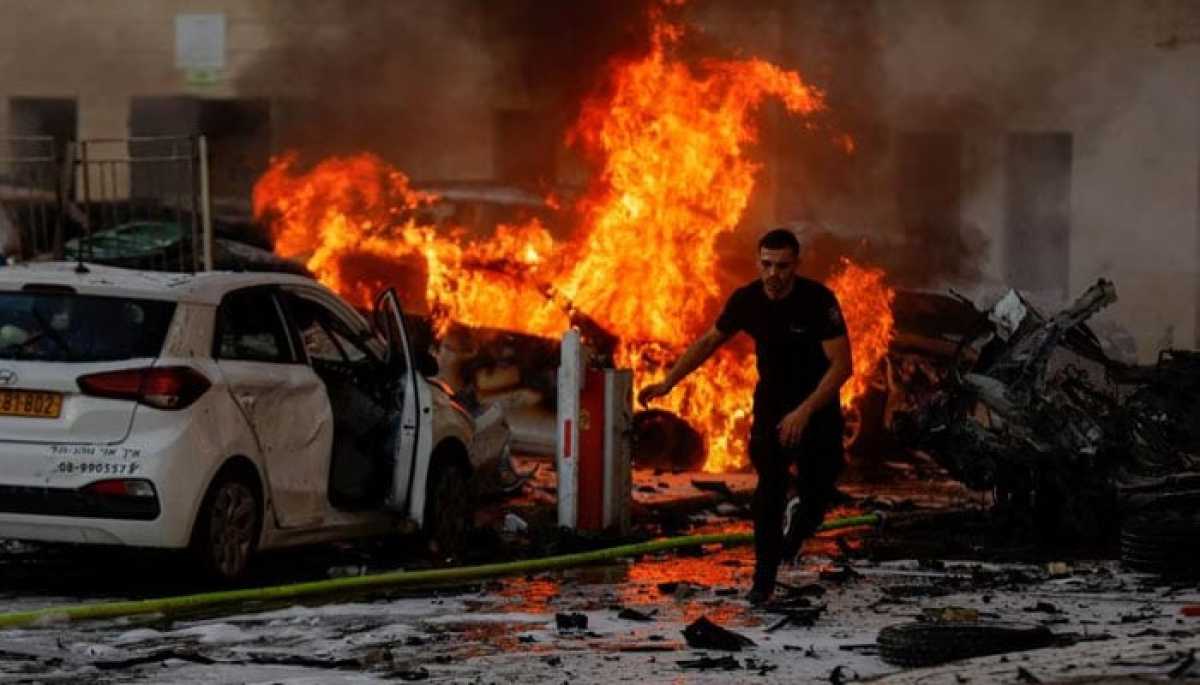World
Israel Faces Intense and Coordinated Attacks from Hamas

Israel is currently experiencing one of the most severe and coordinated attacks launched by the militant group Hamas from the Gaza Strip. In a shocking assault known as Operation Al-Aqsa Flood, Hamas has launched more than 5,000 rockets in just 20 minutes, infiltrated Israeli towns with hundreds of gunmen, and caught Israel off guard.
To defend against the incoming projectiles, Israel has activated its Iron Dome system, a sophisticated air defense system designed to detect and destroy rockets, mortars, artillery shells, and drones targeting populated areas or significant targets. The Iron Dome includes a radar to track threats, a command and control system to calculate interception points, and a launcher that fires Tamir missiles, which detonate near enemy rockets.
Since its deployment in 2011 during the Lebanon war to counter rocket attacks from Hezbollah, the Iron Dome system has claimed a success rate of 90% and has intercepted over 2,000 rockets. However, Hamas’ recent attack has posed a severe challenge for the system. Hamas has been enhancing its rocket arsenal, improving their range and accuracy, and has adopted a new tactic known as a Salvo attack, firing multiple rockets in quick succession to overwhelm the Iron Dome and increase the likelihood of some missiles reaching their targets.
The Salvo attack strategy has resulted in rockets hitting major cities like Tel Aviv and Jerusalem, causing panic and significant damage. The Iron Dome system has been pushed to its limits, requiring the firing of additional Tamir missiles to counter the large number of rockets. However, each Tamir missile is much more expensive than a Hamas rocket, complicating the cost-benefit analysis of the Iron Dome system.
In addition to the rocket barrage, Hamas executed a stunning security breach by sending hundreds of gunmen into Israeli territory through tunnels and gaps in the border fence. These gunmen infiltrated nearby towns and villages, killing civilians and soldiers, seizing security posts and checkpoints, and taking hostages. Israel was caught off guard by the ground invasion, similar to their surprise in the 1973 Yom Kippur War when Syrian and Egyptian forces attacked on two fronts.
Critics argue that this attack signifies an intelligence and security failure on Israel’s part. Hamas took advantage of the relative calm and complacency to prepare for their massive assault, undermining Israel’s layered approach toward Gaza.
Prime Minister Benjamin Netanyahu‘s government, known for its security credentials and hardline stance against Hamas, has faced intense criticism and public outrage for failing to prevent the disaster. In response, Israel has launched airstrikes targeting Hamas positions and infrastructure in Gaza, escalating the conflict into a full-scale war with casualties on both sides.
The international community has called for a cease-fire and the resumption of dialogue, but there appears to be no end in sight for the violence. The Iron Dome system, renowned as a technological marvel and lifeline for Israel, has both been praised for its effectiveness and criticized for fostering a false sense of security. The Hamas attack has revealed the limitations and vulnerabilities of the Iron Dome system while highlighting the futility of war. No air defense system can guarantee complete protection from rockets, and missiles alone cannot ensure liberation from occupation. The only way to achieve peace and security is through dialogue and diplomacy.












